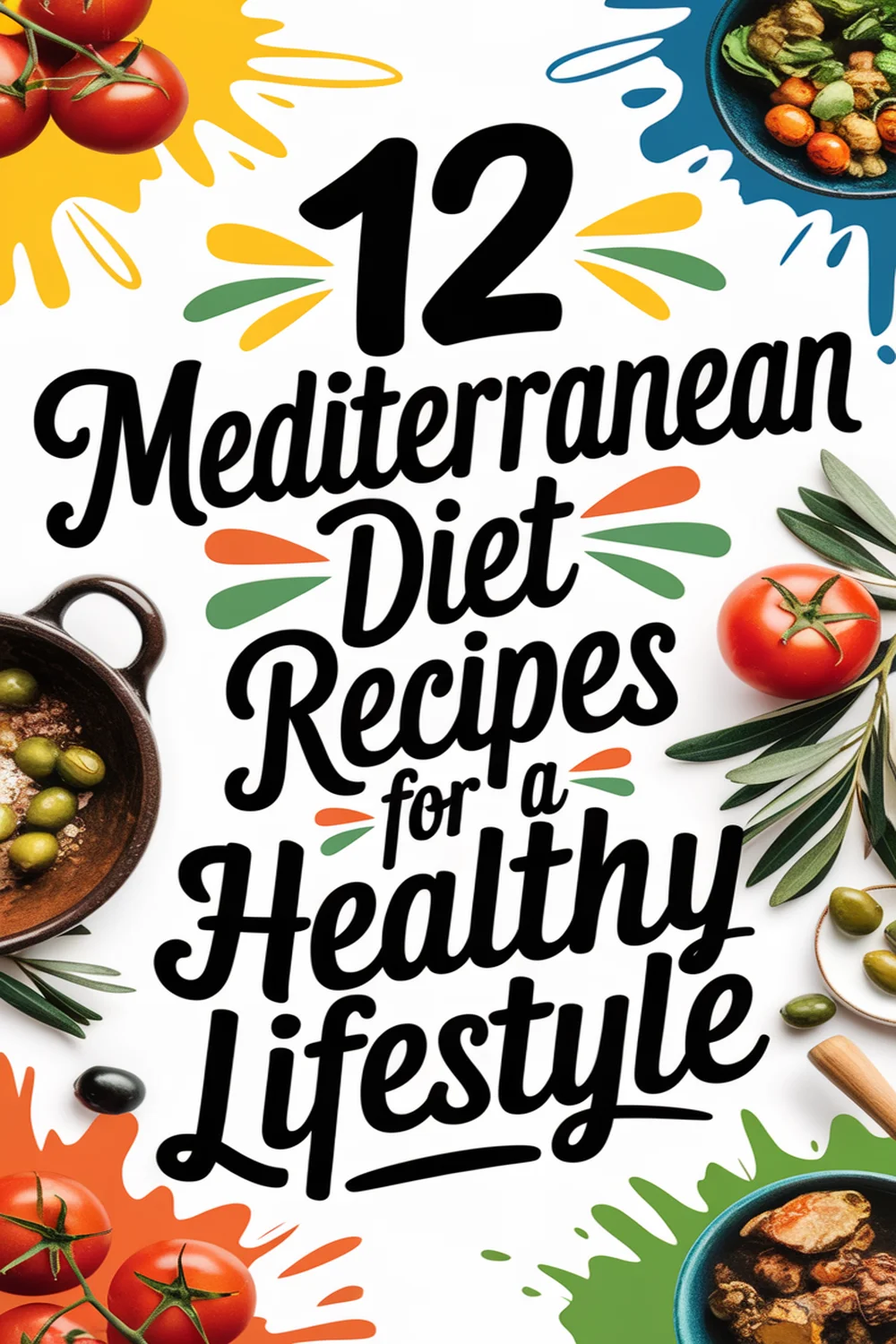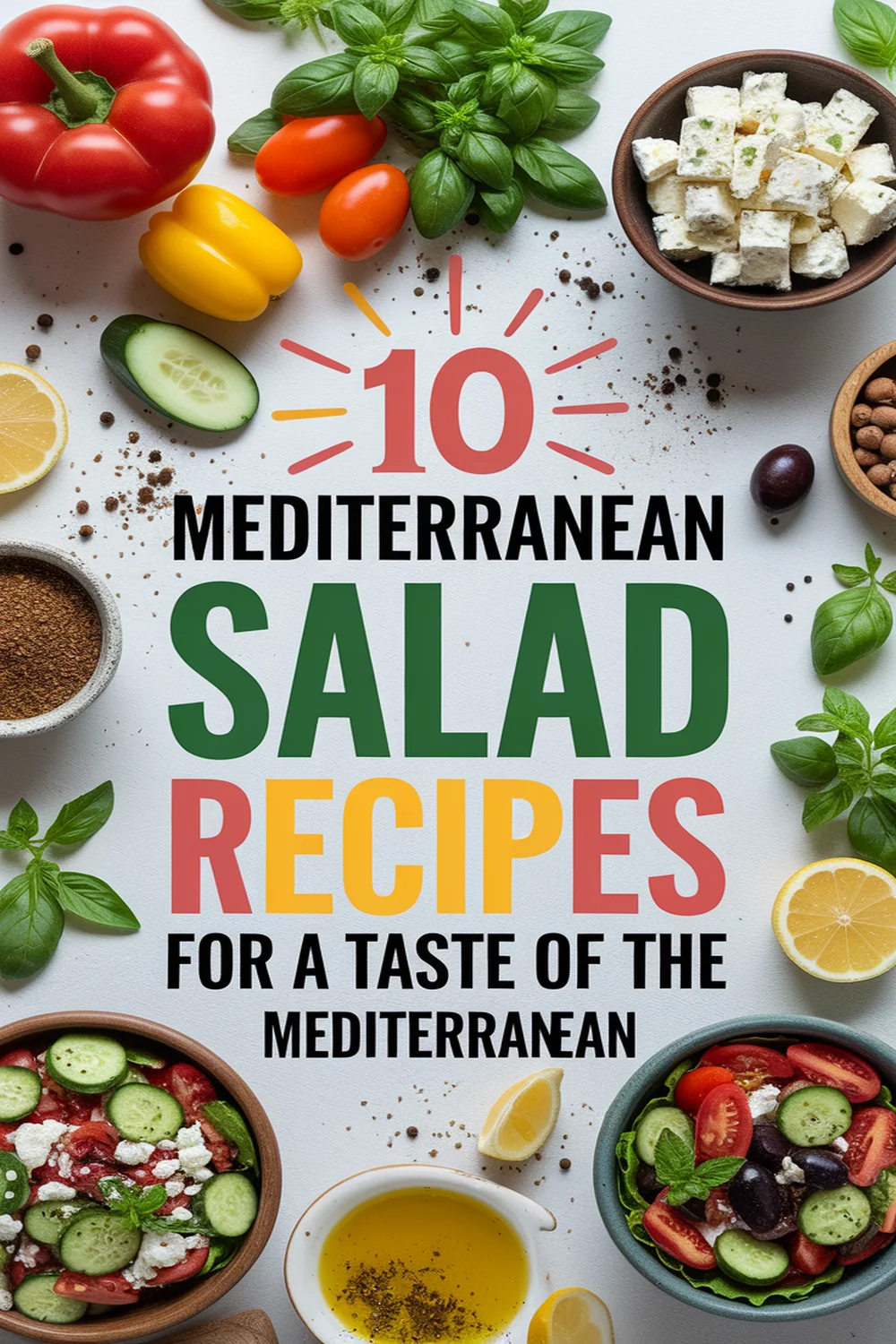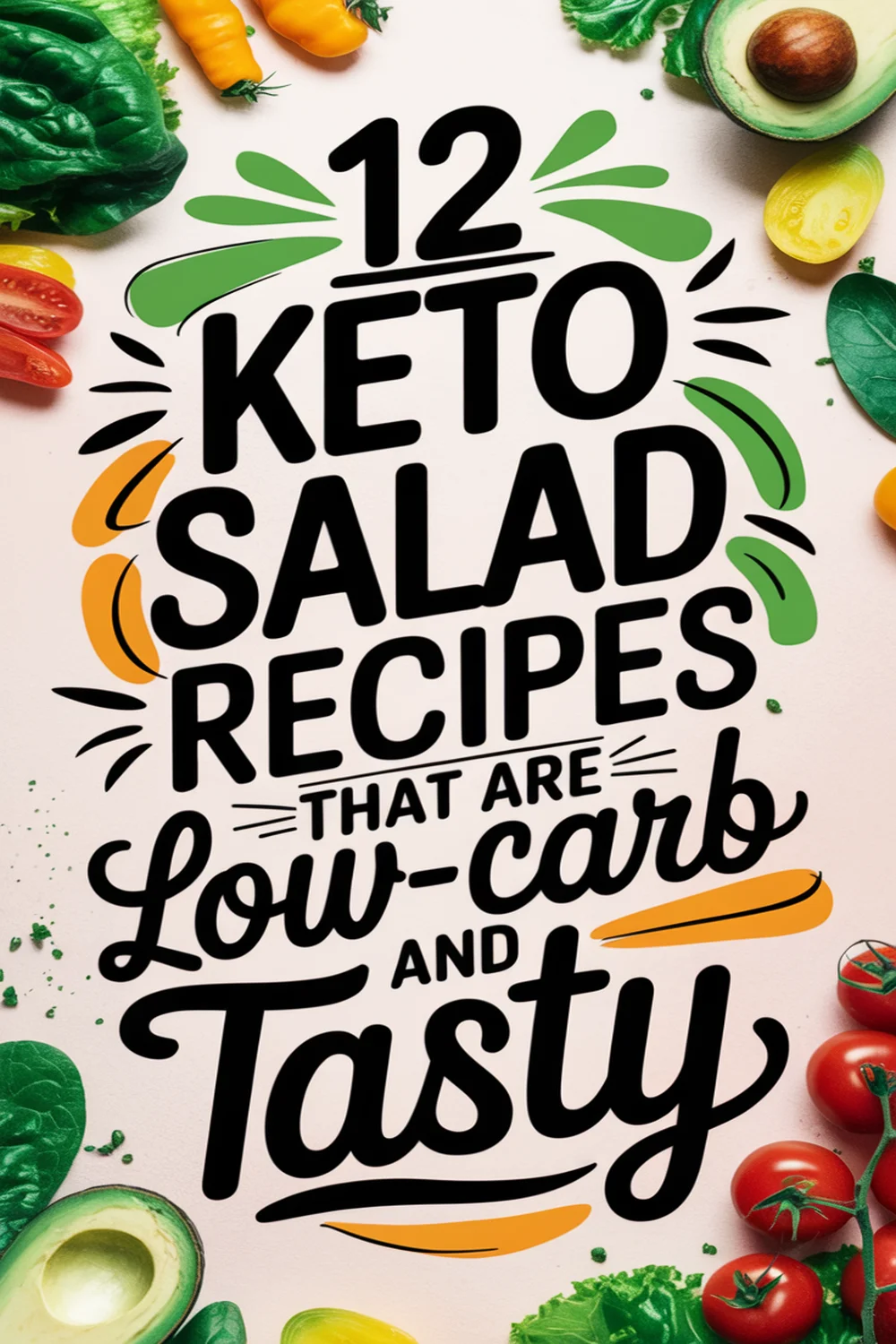This post may contain affiliate links. Please read our policy page.
You’ll love exploring these 12 Middle Eastern recipes, each bursting with vibrant flavors. Start with creamy hummus and smoky baba ghanoush for tasty dips. Then, indulge in crispy falafel and tender shawarma for satisfying main dishes. Don’t forget the invigorating tabbouleh and stuffed grape leaves to balance the meal. For dessert, enjoy the sweetness of knafeh and baklava. Each dish invites you to savor rich cultural heritage, and you’ll discover even more delightful options ahead!
Hummus

Hummus is a classic Middle Eastern dip that takes center stage at many gatherings and meals. It’s known for its creamy texture and rich flavor, making it a popular choice for both appetizers and snacks. Typically made from chickpeas, tahini, lemon juice, and garlic, hummus isn’t only delicious but also packed with nutrients, including protein and healthy fats.
This versatile dip can be enjoyed with pita bread, fresh vegetables, or as a spread on sandwiches. Making hummus at home is simple and allows you to customize the flavor to suit your preferences. Whether you prefer it smooth or with a little texture, adding different herbs or spices can elevate this dish to the next level.
Homemade hummus is also a fantastic way to impress your guests with a dish that pairs perfectly with Middle Eastern cuisine or can be enjoyed on its own as a healthy snack.
- 1 can (15 oz) chickpeas, drained and rinsed
- 1/4 cup tahini
- 2 tablespoons lemon juice
- 2 cloves garlic, minced
- 2 tablespoons olive oil
- 1/2 teaspoon ground cumin
- Salt, to taste
- Water, as needed
- Paprika (for garnish)
- Fresh parsley (for garnish)
In a food processor, combine the chickpeas, tahini, lemon juice, garlic, olive oil, ground cumin, and salt. Blend until smooth, adding water a tablespoon at a time until the desired consistency is reached. Taste and adjust seasoning as necessary. Serve in a bowl, drizzled with olive oil, and garnish with paprika and fresh parsley.
For an even creamier hummus, peel the skins off the chickpeas before blending. You can also experiment with flavors by adding roasted red peppers, sun-dried tomatoes, or spices like smoked paprika or cayenne for a little heat.
Keep your hummus stored in an airtight container in the fridge, where it can last for about a week. Enjoy your homemade hummus as a part of a meze platter or as a dip with your favorite veggies!
Falafel
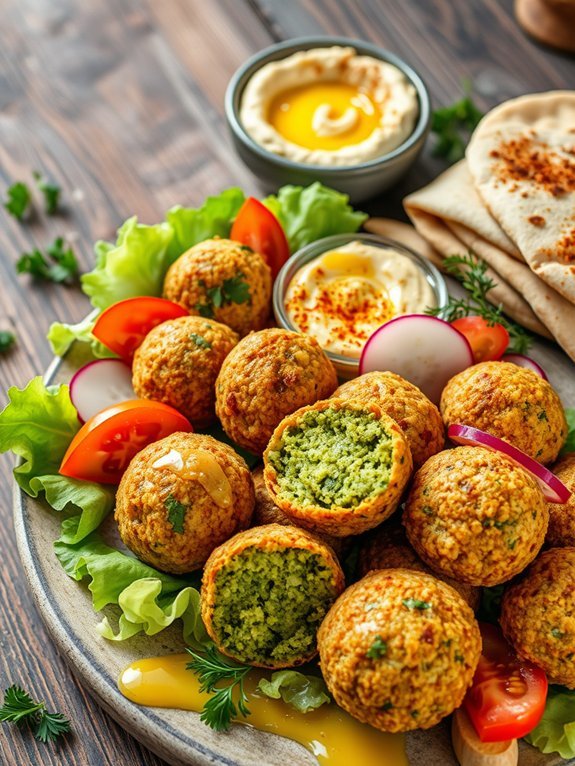
Falafel is a traditional Middle Eastern dish, celebrated for its rich flavor and crispy texture. Made primarily from chickpeas or fava beans, this beloved street food has found its way into the hearts of many around the globe.
Whether served in a pita pocket with fresh vegetables and tahini sauce or enjoyed as a stand-alone snack, falafel isn’t only delicious but also incredibly versatile and suitable for vegetarian and vegan diets.
To achieve the perfect falafel, it’s crucial to start with dried chickpeas, soaked overnight. This process helps them maintain their texture during frying, unlike canned chickpeas, which can lead to a dense result.
Blending the chickpeas with a mix of herbs, spices, and a touch of flour creates a flavorful and aromatic mixture, ready to be formed into patties or balls. Each bite offers a satisfying crunch outside while remaining tender and flavorful on the inside.
Ingredients:
- 1 cup dried chickpeas
- 1 small onion, chopped
- 2 cloves garlic, minced
- 1/4 cup fresh parsley, chopped
- 1/4 cup fresh cilantro, chopped
- 1 teaspoon ground cumin
- 1 teaspoon ground coriander
- 1/2 teaspoon baking powder
- Salt to taste
- Pepper to taste
- Oil for frying
Soak the dried chickpeas in water for at least 8 hours or overnight. Drain and rinse them, then combine them with the onion, garlic, parsley, cilantro, cumin, coriander, baking powder, salt, and pepper in a food processor.
Pulse until a coarse mixture forms, making sure not to over-process. Shape the mixture into small balls or patties. Heat oil in a deep skillet over medium heat and fry the falafel in batches until golden brown and crispy on both sides.
Drain on paper towels and serve hot.
When making falafel, it’s vital to keep the mixture cold before frying, as this helps maintain the shape during cooking. If the mixture feels too loose, adding a bit more flour can help bind it. Additionally, confirm the oil is hot enough before frying to prevent the falafel from absorbing too much oil.
You can also experiment with different herbs and spices to customize the flavor according to your preference. Enjoy exploring this delicious Middle Eastern staple!
Shawarma
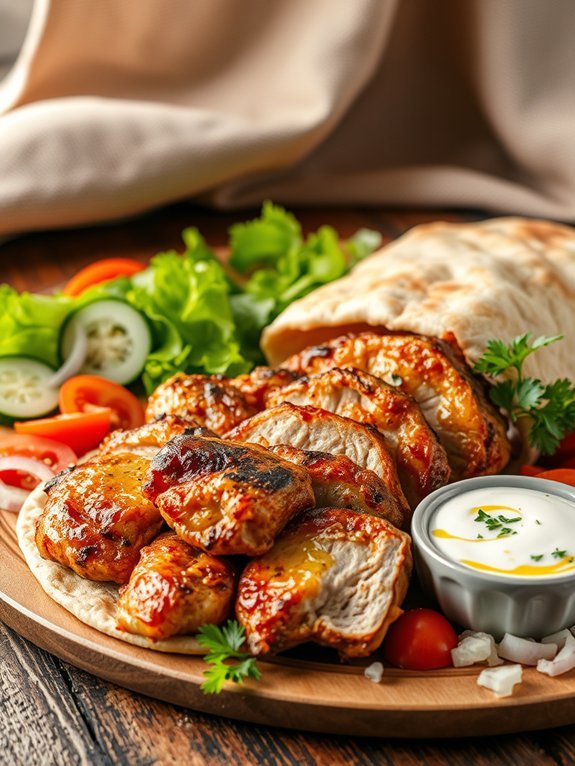
Shawarma is a popular Middle Eastern street food renowned for its rich flavors and tender meat. The dish is traditionally made by marinating meat in a blend of spices, then stacking it on a vertical rotisserie. While it’s typically cooked for hours, this at-home version uses a skillet, allowing you to enjoy the iconic tastes of shawarma without the need for specialized equipment. Perfect for serving in pita bread with fresh vegetables and a delicious sauce, shawarma is a crowd-pleaser that captures the essence of Middle Eastern cuisine.
In addition to being a flavorful meal, shawarma is also quite versatile. You can use various types of meat, such as chicken, beef, lamb, or even a meat alternative for a vegetarian option. The marination process infuses the meat with spices like cumin, coriander, and paprika, making for a succulent and satisfying bite. Served with a tangy garlic sauce, fresh toppings, and warm pita bread, it’s an ideal dish for casual gatherings or a delightful weeknight dinner.
Ingredients:
- 1 pound of chicken thighs or beef/lamb, sliced into thin strips
- 3 tablespoons of olive oil
- 2 tablespoons of plain yogurt
- 2 teaspoons of ground cumin
- 2 teaspoons of ground coriander
- 1 teaspoon of paprika
- 1 teaspoon of turmeric
- 1 teaspoon of garlic powder
- 1 teaspoon of onion powder
- Salt and pepper to taste
- Pita bread, for serving
- Fresh vegetables (lettuce, tomatoes, cucumbers, onions), for toppings
- Garlic sauce or tahini sauce, for drizzling
To prepare the shawarma, begin by mixing the olive oil, yogurt, and all the spices in a large bowl. Add the sliced meat and ascertain it’s well-coated in the marinade. Cover the bowl and let it marinate for at least 30 minutes at room temperature or refrigerate for up to 24 hours for maximum flavor.
Once marinated, heat a skillet over medium-high heat. Cook the meat for about 8-10 minutes, stirring occasionally, until it’s fully cooked and slightly charred. Remove from heat.
For a perfect shawarma experience, consider toasting the pita bread lightly before serving. This adds a delightful crunch and warmth, enhancing the overall taste. Additionally, feel free to customize your toppings based on your preferences—adding pickles, fresh herbs, or a drizzle of chili sauce can elevate the dish even more.
Finally, don’t be afraid to experiment with the marinade; adjusting the spice levels will allow you to create your own unique version of this beloved Middle Eastern classic.
Recommended Items
Get ready to elevate your cooking experience with these fantastic products and equipment!
Products
Tabbouleh

Tabbouleh is a vibrant and revitalizing salad that hails from the Levant region of the Middle East. Traditionally served as part of mezze, this dish showcases the aromatic flavors of fresh herbs, the crunch of vegetables, and the nutty taste of bulgur wheat. Originating from Lebanon and Syria, tabbouleh has gained popularity across the globe for its healthy ingredients and zesty taste.
The star of tabbouleh is parsley, which offers not only a burst of color but also incredible nutritional value. This dish is often served chilled, making it a perfect accompaniment to grilled meats, falafel, or sometimes even enjoyed on its own as a light meal. The recipe can be easily adjusted to personal preference, whether you prefer more tomatoes, a tangier dressing, or a heartier serving of bulgur.
- 1 cup fine bulgur wheat
- 2 cups boiling water
- 2 cups fresh parsley, finely chopped
- 1/2 cup fresh mint, finely chopped
- 1/4 cup fresh tomatoes, finely diced
- 1/4 cup green onions, finely chopped
- 1/4 cup olive oil
- 1/4 cup fresh lemon juice
- Salt and pepper to taste
In a large bowl, combine the fine bulgur wheat with the boiling water, cover, and let it sit for about 30 minutes until all the water is absorbed and the bulgur is tender. Once the bulgur is ready, fluff it with a fork and combine it with the chopped parsley, mint, tomatoes, and green onions in a mixing bowl.
Drizzle the olive oil and lemon juice over the mixture, season with salt and pepper, and toss everything gently until well combined. Allow the tabbouleh to sit for 15-20 minutes before serving to let the flavors meld together.
When preparing tabbouleh, guarantee that your ingredients are as fresh as possible, particularly the herbs, as they’re the key to achieving the dish’s vibrant flavor. If you want a more pronounced flavor, consider letting the salad chill in the refrigerator for a couple of hours before serving.
Additionally, feel free to experiment with ratios; some people prefer a higher bulgur-to-herb ratio, while others enjoy a herb-heavy tabbouleh. Just remember that the balance of flavors is what makes this dish so delightful!
Proposed Recipe Ideas
Baba Ghanoush

Baba Ghanoush is a smoky and creamy Middle Eastern dip that showcases the eggplant as its main ingredient. Traditionally enjoyed with pita bread, it’s perfect for gatherings, parties, or a light snack. The simplicity of the ingredients allows the rich flavor of roasted eggplant to shine, while tahini adds a unique nutty essence. This dish isn’t only delicious but also packed with nutrients, making it a great choice for those seeking healthy and flavorful options in their diet.
To achieve that distinctive smoky flavor that characterizes Baba Ghanoush, the eggplant is typically roasted over an open flame or in the oven until it collapses and becomes soft. Blending it with tahini, garlic, lemon juice, and a touch of olive oil creates a smooth and creamy texture that’s hard to resist. No gathering is complete without this flavorful dip, which can be customized to taste with additional spices or toppings.
- 2 medium-sized eggplants
- ¼ cup tahini
- 2 tablespoons olive oil
- 2 cloves garlic, minced
- Juice of 1 lemon
- Salt to taste
- Fresh parsley, for garnish
- Pita bread or vegetable sticks, for serving
Preheat your oven to 400°F (200°C). Slice the eggplants in half lengthwise and score the flesh with a knife. Place them on a baking sheet cut side up, drizzle with olive oil, and sprinkle with a pinch of salt. Roast for about 30-40 minutes, until the flesh is fork-tender and slightly charred.
Once cooled, scoop out the flesh and place it in a food processor. Add tahini, garlic, lemon juice, and additional salt to taste. Blend until smooth and creamy. Transfer to a serving bowl, drizzle with olive oil, and garnish with fresh parsley.
For an extra layer of flavor, try grilling the eggplant over an open flame, which will impart a deeper smoky taste to your Baba Ghanoush. If you prefer a spicier kick, consider adding a pinch of smoked paprika or cayenne pepper to the mix.
This dip can be stored in the refrigerator for up to three days, making it a fantastic make-ahead option. Serve with assorted vegetables or warm pita bread for a delightful appetizer that everyone will love!
Kibbeh

Kibbeh is a beloved dish in Middle Eastern cuisine, renowned for its unique blend of flavors and textures. Originating from the Levant region, this dish is often made with a combination of bulgur wheat and minced meat, typically lamb or beef, mixed with spices and herbs.
Kibbeh can be served in various forms, such as baked, fried, or served raw, showcasing the versatility of its ingredients. It isn’t only a staple in Middle Eastern households but also a popular addition to celebratory feasts and gatherings.
The preparation of Kibbeh might seem intricate, but with a little practice and attention to detail, you can create a mouthwatering dish that will impress your family and friends. It typically features a spiced meat mixture encased in a fine bulgur shell and traditionally includes fillings of nuts and additional spices.
The combination of textures—crispy outside and tender inside—makes Kibbeh an unforgettable culinary experience.
Ingredients
- 2 cups fine bulgur wheat
- 1 pound ground lamb or beef
- 1 medium onion, finely chopped
- 1 teaspoon ground cinnamon
- 1 teaspoon ground allspice
- 1 teaspoon salt
- ½ teaspoon black pepper
- ¼ cup fresh parsley, chopped
- ½ cup pine nuts (optional)
- Olive oil for frying
- Water (as needed)
To prepare the kibbeh, start by soaking the bulgur in warm water for about 30 minutes, then drain and squeeze out excess moisture. In a large mixing bowl, combine the soaked bulgur, ground meat, chopped onion, cinnamon, allspice, salt, black pepper, and parsley.
Mix thoroughly until all the ingredients are well incorporated, forming a dough-like consistency. If preparing a filling, lightly toast pine nuts in olive oil and add to the mixture before shaping the kibbeh into balls or patties. Shape the kibbeh either into oval balls or flat discs, then heat olive oil in a frying pan over medium heat and fry until cooked through and golden brown, around 5-7 minutes per side.
When cooking Kibbeh, it’s important not to overcrowd the frying pan to guarantee even cooking and crispiness. You can also experiment by adding various fillings, such as sautéed onions or raisins, to introduce different flavors.
If you’re making a baked version, consider layering your kibbeh in a greased baking dish, drizzling olive oil on top, and baking until golden brown. Remember to serve your Kibbeh with a revitalizing yogurt sauce or a side of tabbouleh for a complete meal. Enjoy your culinary journey into Middle Eastern flavors!
Fattoush
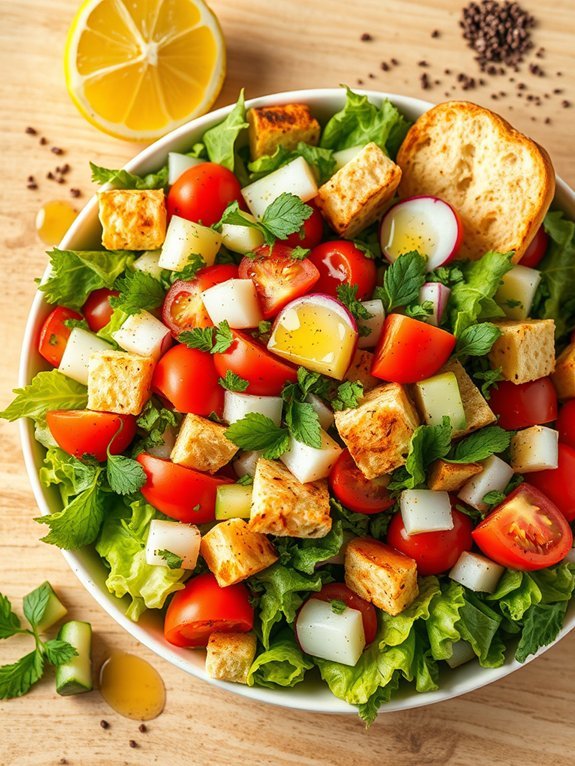
Fattoush is a vibrant and invigorating Lebanese salad that’s celebrated for its delightful combination of flavors and textures. This dish is traditionally made with a variety of fresh vegetables, crisp salad greens, and pieces of toasted or fried pita bread, which give it a delightful crunch.
The use of sumac, a tangy Middle Eastern spice, adds a unique depth to the salad, making it a perfect accompaniment to any meal or a stand-alone dish during the warm seasons.
The beauty of fattoush lies in its adaptability, allowing you to incorporate a range of fresh produce based on what’s in season or to your personal preference. Common ingredients include tomatoes, cucumbers, radishes, and herbs like parsley and mint, all tossed together with a zesty dressing made from lemon juice and olive oil.
As you prepare this salad, you’ll find that it not only bursts with color but also offers an invigorating palate cleanser that’s perfect for sharing at gatherings.
Ingredients:
- 2 cups romaine lettuce, chopped
- 1 cup mixed greens (arugula, watercress, etc.)
- 1 medium cucumber, diced
- 2 medium tomatoes, diced
- 1/2 cup radishes, sliced
- 1/2 cup parsley, chopped
- 1/4 cup mint leaves, chopped
- 2 pita breads, toasted or fried and broken into pieces
- 1/4 cup olive oil
- 2 tablespoons fresh lemon juice
- 1 tablespoon sumac
- Salt and pepper, to taste
In a large mixing bowl, combine the chopped romaine and mixed greens with the diced cucumbers, tomatoes, radishes, parsley, and mint.
In a separate small bowl, whisk together the olive oil, lemon juice, sumac, salt, and pepper. Pour the dressing over the salad and toss gently to combine, ensuring all the ingredients are evenly coated.
Just before serving, add in the broken pieces of pita bread for that delightful crunch.
When preparing fattoush, feel free to adjust the ingredients based on your preferences or what you have on hand. You can add bell peppers for more color or even chickpeas for added protein.
For the best flavor, allow the salad to sit for a few minutes after tossing to let the flavors meld together, but don’t wait too long to add the pita, as it will get soggy. Enjoy this invigorating dish as a starter or a side that complements any Middle Eastern meal!
Mujadara
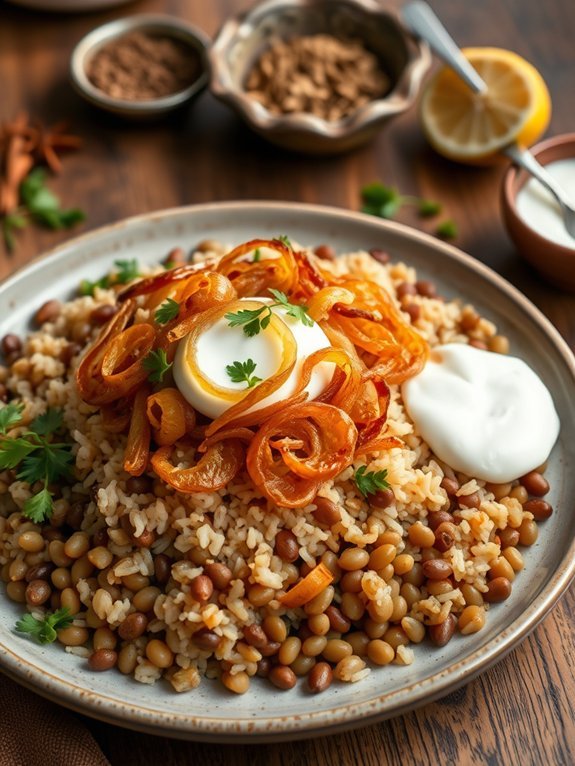
Mujadara is a beloved Middle Eastern dish that beautifully combines lentils, rice, and caramelized onions, creating a comforting meal that’s rich in flavor and texture. This dish has roots in various cultures throughout the Middle East, making it a staple in many households and often served as a side dish or a vegetarian main course.
The savory aroma of the onions caramelizing and the earthy notes of lentils contribute to its popularity, making it a favorite for many.
Preparing Mujadara is relatively simple, yet it rewards you with a satisfying and wholesome meal. It’s not only economical—using basic pantry ingredients—but it also boasts health benefits, thanks to the high protein and fiber content of lentils. This dish can be customized to personal tastes by adding spices or serving it with a side of yogurt or a fresh salad.
- 1 cup green or brown lentils
- 1 cup long-grain rice (jasmine or basmati)
- 3 large onions, thinly sliced
- 1/4 cup olive oil
- 4 cups water or vegetable broth
- 1 teaspoon cumin
- Salt, to taste
- Black pepper, to taste
- Optional: yogurt for serving
- Optional: fresh herbs for garnish
Rinse the lentils and rice under cold water. In a large pot, heat the olive oil over medium heat and add the sliced onions. Cook the onions slowly, stirring often, until they become golden brown and caramelized, which usually takes about 15-20 minutes. Remove half of the onions for garnishing later, then add the rinsed lentils to the pot along with water or broth, cumin, salt, and pepper.
Bring to a boil, reduce the heat, and let simmer for about 10 minutes. Next, add the rinsed rice, cover, and cook on low heat for an additional 20-25 minutes until the lentils and rice are tender and the liquid is absorbed.
When making Mujadara, consider soaking the lentils for a few hours before cooking to reduce their cooking time and enhance digestibility. You can adjust the caramelization of the onions to your preference; some may enjoy them darker for a richer flavor.
Feel free to include additional spices such as cinnamon or coriander for added warmth, and serve with a squeeze of lemon juice or a dollop of yogurt to balance the earthiness of the dish.
Stuffed Grape Leaves
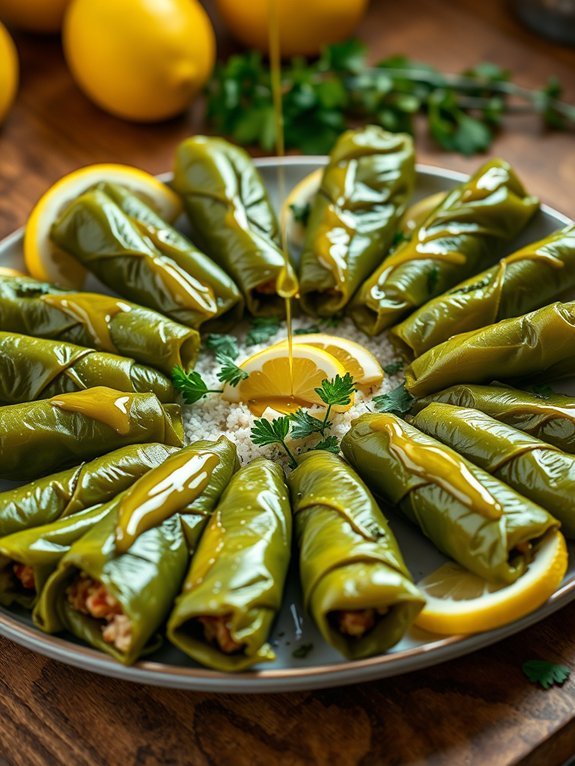
Stuffed grape leaves, known as dolmas, are a classic Middle Eastern dish that showcases the rich flavors and culinary traditions of the region.
These delicate parcels are typically filled with a mix of rice, herbs, and spices, making them a versatile dish suitable for any occasion. Whether served as an appetizer, main course, or side dish, stuffed grape leaves invite a sense of communal eating, often enjoyed with a drizzle of olive oil and a squeeze of lemon.
The history of grape leaves as a food source dates back centuries, making them not just a staple in Middle Eastern cuisine but also in Mediterranean and Asian cooking. Their unique flavor, combined with the tanginess of the filling, creates a dish that’s both satisfying and invigorating.
Preparing stuffed grape leaves may seem intimidating, but with the right technique, you can master this beloved recipe and share it with family and friends.
Ingredients:
- 1 jar of grape leaves (16 oz), rinsed and drained
- 1 cup of short-grain rice
- 1 large onion, finely chopped
- 2 tablespoons olive oil (plus extra for drizzling)
- 1 cup fresh parsley, finely chopped
- 1/4 cup fresh dill, chopped
- 1/4 cup fresh mint, chopped (optional)
- 1/2 teaspoon salt
- 1/4 teaspoon black pepper
- Juice of 1 lemon
- 1 1/2 cups vegetable broth or water
To prepare the stuffed grape leaves, heat the olive oil in a skillet over medium heat and sauté the chopped onion until translucent. Add the rice and stir for a couple of minutes before adding the chopped herbs, salt, pepper, and lemon juice. Mix well and remove from heat.
Lay the grape leaves on a flat surface, vein side up, and place about a tablespoon of the filling at the base of each leaf. Fold in the sides and roll tightly. Arrange the stuffed leaves in a pot, seam side down, and cover with vegetable broth or water. Place a heavy plate on top to keep them submerged, then cook on low heat for about 45 minutes to 1 hour until the rice is tender and the leaves are cooked through.
When making stuffed grape leaves, keep in mind that the rolling technique can take practice, so don’t worry if your first few aren’t perfect.
Be sure to use tender grape leaves for a more pliable result, and if you catch any tough or split leaves, discard them. Experimenting with additional fillings, such as ground meat or nuts, can also add a different flavor profile to your dolmas.
Finally, allowing the dish to rest for a few minutes after cooking enhances the flavors, making them even more delicious when served warm or at room temperature.
Shakshuka
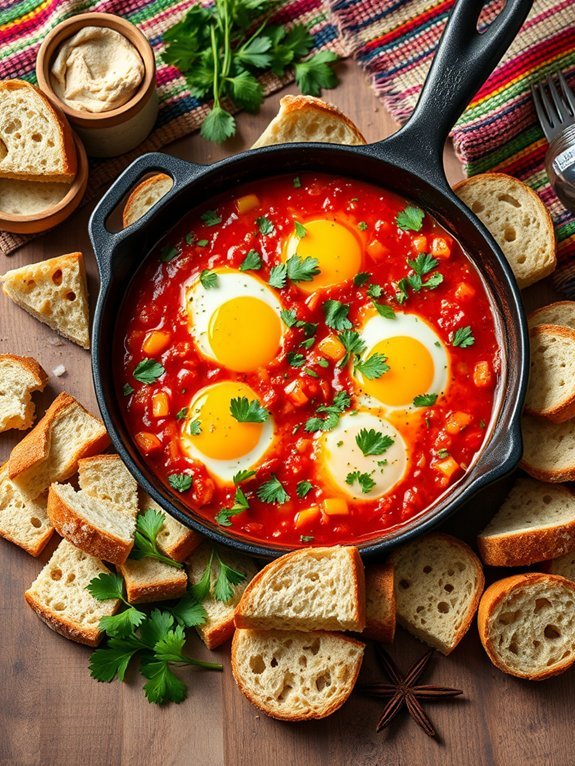
Shakshuka is a delightful Middle Eastern dish that has gained immense popularity across the globe. Originating from North Africa, this dish features poached eggs simmered in a vibrant tomato and pepper sauce, infused with an array of spices that tantalize the taste buds. Traditionally enjoyed as a breakfast or brunch dish, shakshuka isn’t just another meal; it embodies the warmth and hospitality of the cultures from which it hails.
The beauty of shakshuka lies in its simple yet flavorful ingredients, combining the sweetness of tomatoes with the richness of eggs. It’s versatile enough to be customized according to personal preferences. Whether enjoyed as a comforting solo meal or served as a shareable platter with crusty bread, shakshuka brings a sense of togetherness to any dining occasion.
Ingredients:
- 2 tablespoons olive oil
- 1 onion, diced
- 1 bell pepper, diced
- 3 cloves garlic, minced
- 1 teaspoon ground cumin
- 1 teaspoon sweet paprika
- ¼ teaspoon cayenne pepper (optional for heat)
- 1 can (14 oz) crushed tomatoes
- Salt and black pepper, to taste
- 4-6 large eggs
- Fresh parsley or cilantro, chopped (for garnish)
- Crusty bread, for serving
Heat the olive oil in a large skillet or frying pan over medium heat. Sauté the diced onion and bell pepper until they soften, about 5-7 minutes. Add the minced garlic, cumin, paprika, and cayenne (if using) and continue to sauté for another minute.
Pour in the crushed tomatoes, season with salt and black pepper, and let the sauce simmer for about 10 minutes. Gently make shallow wells in the sauce and crack the eggs into each well. Cover the skillet and cook until the egg whites are set but the yolks remain runny, around 5-8 minutes.
Garnish with chopped parsley or cilantro before serving.
When preparing shakshuka, feel free to experiment with additional ingredients such as spinach, feta cheese, or spicy sausage to enhance the dish. Adjust the seasoning and spice levels according to your taste, and keep in mind that the freshness of the ingredients will elevate the overall flavor. Serve with warm, crusty bread for dipping into the rich sauce, making the meal as interactive as it’s delicious.
Knafeh

Knafeh is a beloved dessert that hails from the Middle East, particularly popular in countries like Lebanon, Palestine, and Turkey. This iconic sweet features a combination of shredded phyllo dough and a creamy cheese filling, all drenched in a fragrant sugar syrup.
It’s typically served warm, allowing the textures to meld together perfectly and the flavors to shine, making it a delightful treat for special occasions and everyday indulgence alike.
The beauty of knafeh lies in its versatility; you can adjust the filling, sweetness, and even the texture according to your preferences. While traditional recipes often use Nabulsi or Akkawi cheese, you can opt for mozzarella or ricotta if unavailable.
This dish also boasts a stunning golden color, achieved by baking the layers until crisp and crumbly, creating an inviting contrast with the soft, sweet filling inside.
Ingredients:
- 1 package of shredded phyllo dough (kadayif)
- 1 cup unsalted butter, melted
- 2 cups mozzarella cheese
- 1 cup ricotta cheese
- 1 cup sugar
- 1 cup water
- 1 tablespoon rose water (optional)
- 1 teaspoon orange blossom water (optional)
- Chopped pistachios for garnish (optional)
To make the knafeh, preheat your oven to 350°F (175°C). In a mixing bowl, combine the shredded phyllo dough with melted butter, ensuring it’s well-coated.
In a separate bowl, mix the mozzarella and ricotta cheeses until combined. Layer half of the buttered phyllo dough in a greased baking dish, then spread the cheese mixture evenly on top, followed by the remaining phyllo on top.
Bake for about 30-40 minutes, or until the top is golden brown. While the knafeh bakes, prepare the syrup by boiling water and sugar together for around 10 minutes, adding rose and orange blossom water if using.
Once baked, pour the syrup over the knafeh and let it soak for a few minutes before garnishing with chopped pistachios and serving warm.
When preparing knafeh, make sure to work quickly with the phyllo dough to prevent it from drying out, as it can become difficult to handle.
You can also experiment with different toppings and fillings, such as adding crushed walnuts or drizzling honey over the top for an extra layer of sweetness.
Serve knafeh warm, as it tastes best fresh out of the oven, and consider pairing it with a side of yogurt or ice cream for a delightful contrast to its warm, sweet flavors.
Baklava

Baklava is a quintessential Middle Eastern dessert that captures the essence of the region’s rich culinary heritage. This sweet pastry consists of layers of delicate phyllo dough filled with a mixture of finely chopped nuts, typically walnuts or pistachios, and sweetened with a sticky syrup made from honey and lemon. Its origins trace back centuries and span across various cultures, with each region adding its unique twist to the classic recipe.
The resulting treat is a delightful combination of crispy, flaky textures and sweet, aromatic flavors that make it a favorite for special occasions and gatherings.
Making baklava may seem intimidating at first due to the many layers involved, but the process is quite simple and incredibly rewarding. Once you master this timeless recipe, you can enjoy the fruits of your labor with family and friends, or present it as a remarkable gift.
Serve it alongside a cup of strong Arabic coffee or tea for an authentic experience, and watch as everyone savors every rich, nutty bite of this beloved dessert.
Ingredients:
- 1 package of phyllo dough (16 oz), thawed
- 1 cup unsalted butter, melted
- 2 cups walnuts or pistachios, finely chopped
- 1 cup granulated sugar
- 1 teaspoon ground cinnamon
- 1 cup water
- 1/2 cup honey
- 1 teaspoon vanilla extract
- 1 tablespoon lemon juice
Layer a baking dish with phyllo sheets, brushing melted butter between layers, and alternating with the nut mixture combined with sugar and cinnamon. After forming about 10 layers, pour the remaining nuts over the stacked dough, then finish layering with more phyllo sheets and brush with butter.
Cut the baklava into diamond shapes before placing it in the oven at 350°F (175°C) for about 45 minutes until golden. While it’s baking, prepare the syrup by boiling water, sugar, honey, lemon juice, and vanilla until slightly thickened.
Once the baklava is out of the oven, immediately pour the warm syrup over it and let it soak for a few hours before serving.
Before starting your baklava journey, make sure that you keep the phyllo dough covered with a damp towel while working with it to prevent it from drying out. Additionally, don’t rush the layering process; a carefully crafted baklava with evenly spread layers will yield the best texture and flavor.
Finally, feel free to experiment with different nuts or spices according to your taste preferences, and remember that the longer baklava sits, the more the flavors meld, so it’s best made a day in advance for an even richer taste.






